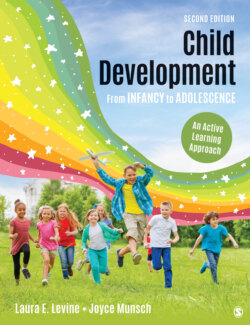Читать книгу Child Development From Infancy to Adolescence - Laura E. Levine - Страница 64
The Role of the Child in Development
ОглавлениеAre you the person you are today because you chose to be that person, or did someone else make you who you are? How you think about that question pretty much sums up the issue of an active child versus a passive one. Some theories presume that it is the environment that shapes the development of the child. The clearest example of this way of thinking is called learning theory or behaviorism. As you will see in Chapter 2, this approach looks at the way that systematic use of rewards and punishment affects the likelihood that a child will—or won’t—behave in certain ways. You may agree with this point of view if you think children are like lumps of clay that parents shape into the type of children they want. Other theories in child development give children a much more active role in shaping their own development. For example, Jean Piaget’s theory of cognitive development, discussed in Chapter 2, is based on the idea that children actively explore their environment and, in the process, construct their own ideas about how the world works.
As with some of the other issues we have already discussed, maybe the answer to this issue isn’t one or the other, but rather some combination of both. The concept of niche picking (Scarr & McCartney, 1983) suggests that people actively seek out environments that are a good fit with their genetic makeup. In this way, children actively shape their experiences by choosing environments that, in turn, enhance or inhibit the characteristics that initially attracted the child to that environment. And, while children don’t choose the family, the neighborhood, or culture into which they are born, each of these environments significantly impacts and shapes their development. Later in this chapter, we describe in more detail the important roles specific contexts have on development.
Niche picking: The process by which people express their genetic tendencies by finding environments that match and enhance those tendencies.
